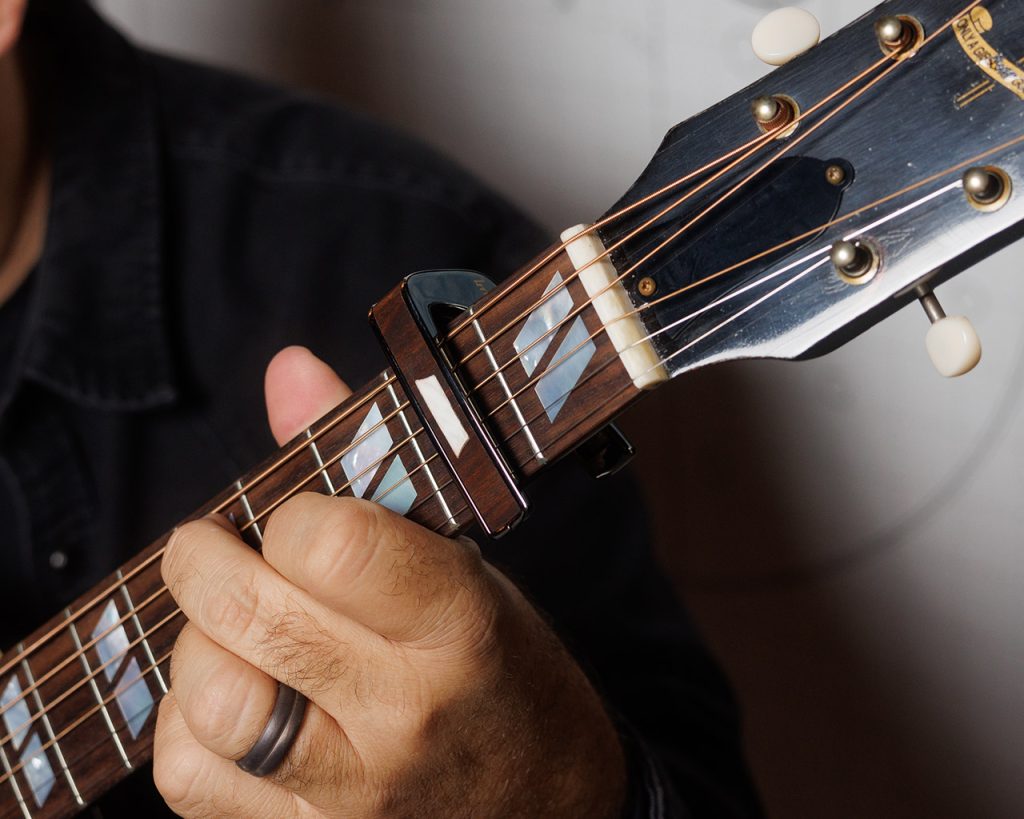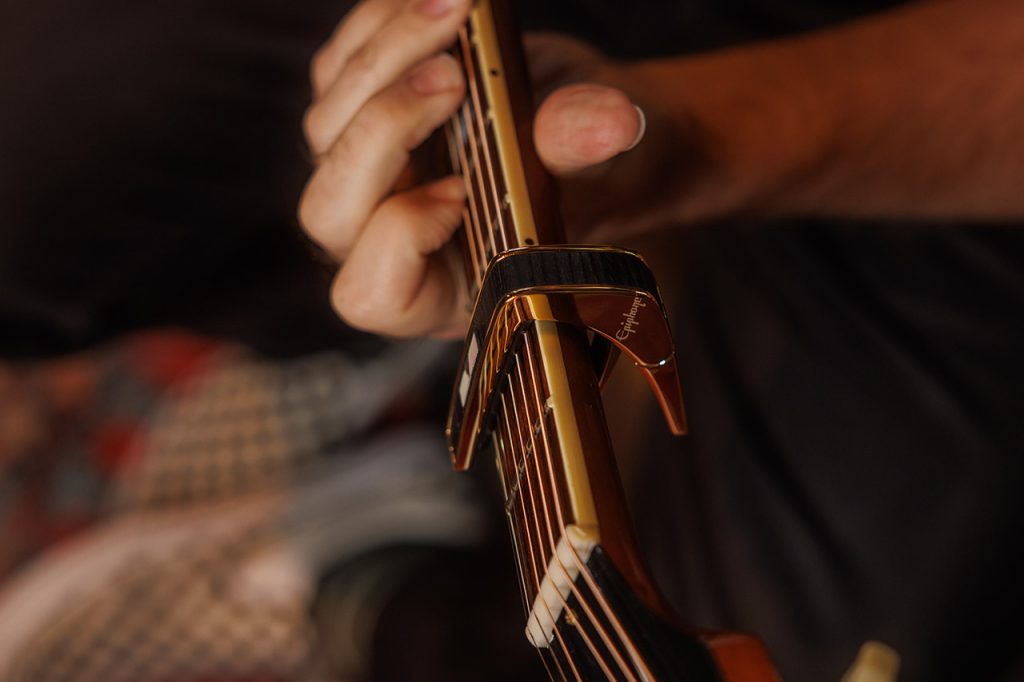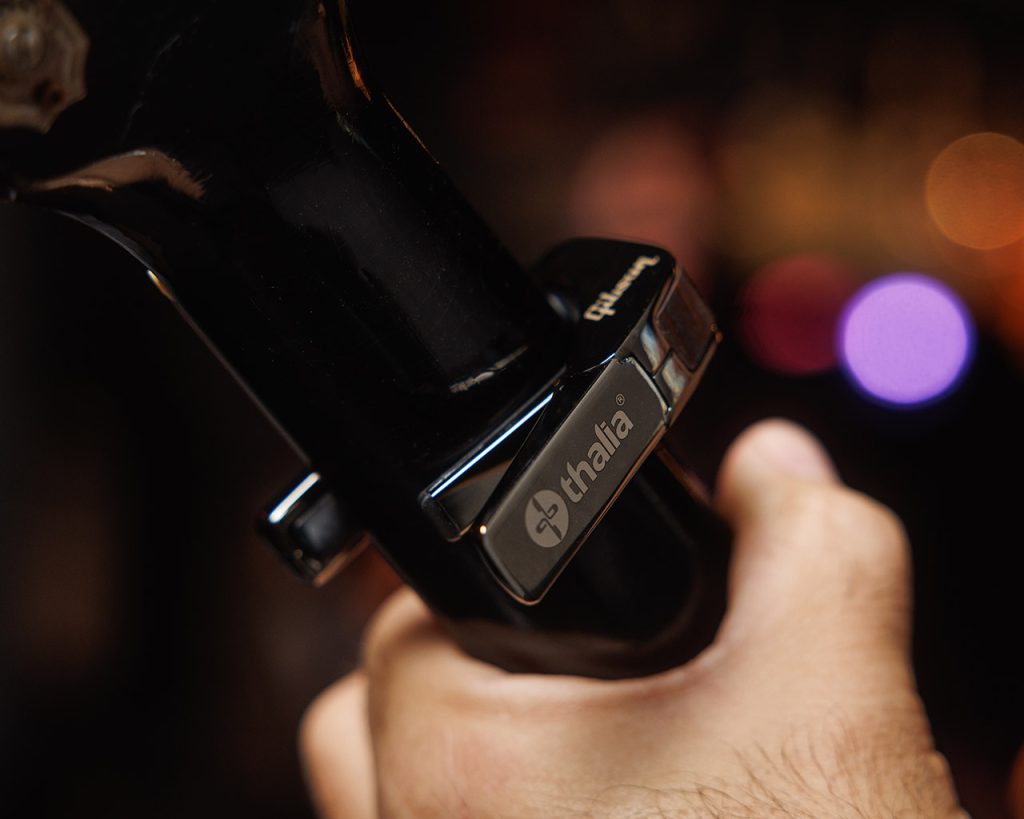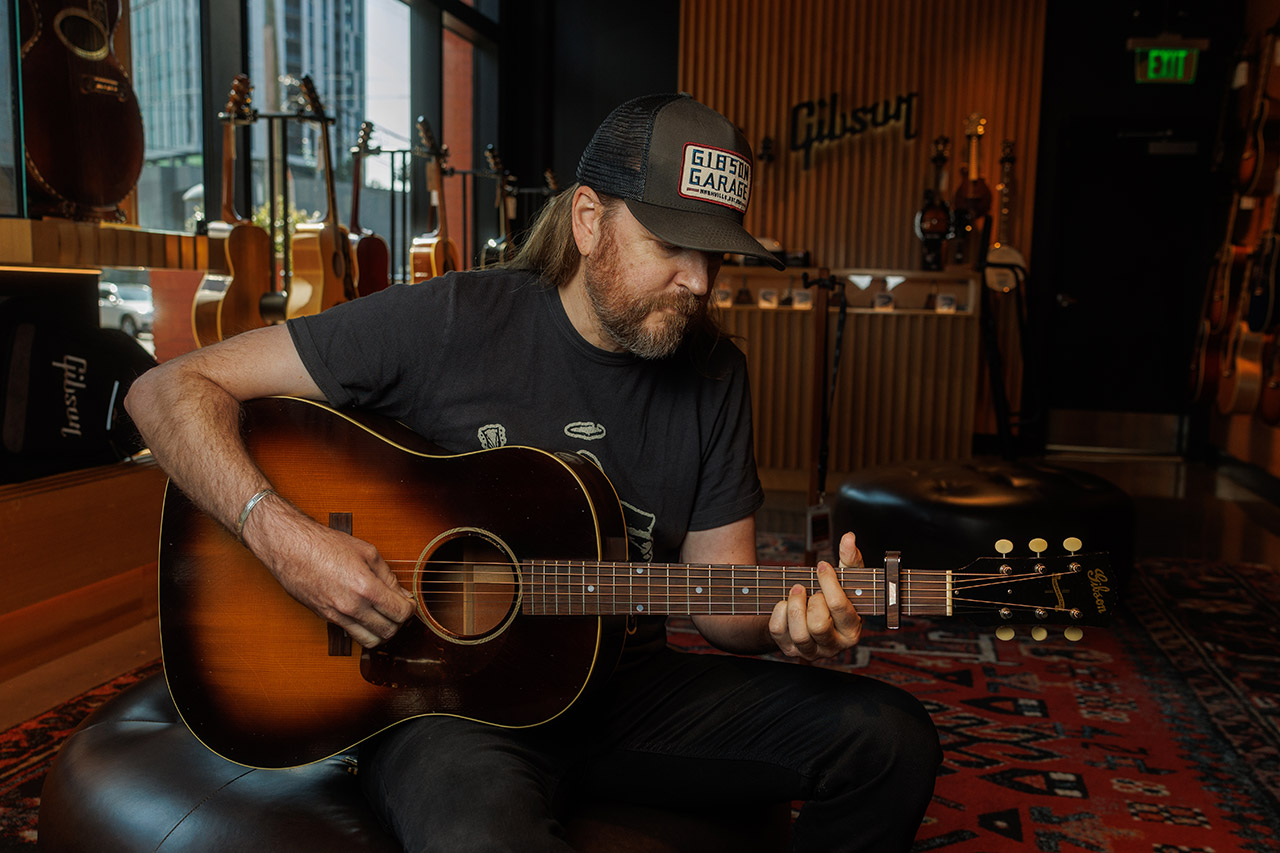How to use a capo to play along with your favorite songs
At the beginning of your guitar journey, there’s a classic checklist of things you need to learn. How to tune your guitar. How to hold a pick. How to put on a fresh set of strings.
One must-know piece of information many new acoustic or electric guitar players miss is learning about the capo. Capos are an essential tool in every guitar player’s toolbox.
But what is a guitar capo, exactly? And what does it do? We’re answering these questions and many more in this comprehensive guide.
Understanding a Guitar Capo
So, what is a capo for? A capo is a small, movable guitar accessory that attaches to the guitar neck, presses down on the strings of your guitar, and raises the pitch of all strings at the same time. This allows acoustic, electric, or classical guitar players to play in a different key using familiar open chord shapes.
Capos (officially called “capotastos”) have been in use since at least the 1700s, and several different types of capos have been patented over the years.1 Some of the diverse styles of capos include:
- The trigger capo
- The adjustable tension capo
- The cradle capo
- The toggle capo
Despite their differing appearances, all capos do more or less the same thing. In a sense, you can think of a capo as a movable nut (the hard part that holds your strings in place and acts as the “zero fret” of your guitar). Every time you relocate your capo, you’re altering the lowest notes of your guitar, changing the guitar tuning without touching the tuning pegs. For example, placing a capo on the 3rd fret and playing an open G chord shape will sound like a Bb chord, alleviating the need for beginners to play a barre chord.
As you might imagine, this ability to change pitch on the fly is a game-changer for musicians at home, on stage, and in the studio.
Why Do Guitarists Use a Capo?
By now, you should understand what a guitar capo is. But what do capos do? Why does every well-equipped guitar case contain at least one capo?
Guitarists use the pitch-changing abilities of capos for a variety of reasons.

Changing the Key Quickly and Easily
First and foremost, a capo allows you to change a song’s key within seconds.
Let’s say you have a song in the key of E, but you’d rather play it in the key of A. Instead of learning new chords, you can simply move the capo up the neck of the guitar (five frets up, to be exact) and play the same chords as in the original song.
By positioning the capo on a new fret, you essentially transpose the song, moving every single chord up or down the neck in an even interval.
Quick key changes are especially helpful for those who sing while playing. If the original key of a song doesn’t suit your voice, experiment with other keys. Even moving the capo up or down by a single fret can make an enormous difference. These on-the-fly key changes are also valuable during songwriting.
Playing Alternate Voicings
An E chord is an E chord, right? Well, not exactly. Although any E chord will sound “right” when you’re supposed to play an E, there are multiple ways to play or finger an E chord. A capo allows you to experiment with those different voicings.
If you have a guitar and capo handy, try this little experiment to hear what alternate voicings sound like.
- Play a standard E chord – With the capo removed, play a traditional E chord (with your middle finger on the second fret of the A string, your ring finger on the second fret of the D string, and your index finger on the first fret of the G). Hear the body of the chord, the way the low E resonates deeply.
- Play an alternate E chord – Now, place the capo on the fourth fret and play a C shape. Because of where the capo is, you’ve actually played an E chord. Notice how it sounds the same as the first E—yet different, with more sparkle? That’s an alternate chord voicing.
Of course, you don’t need a capo to play different chord voicings—you can just make different chord shapes with your fingers. However, a capo makes experimenting with new voicings far easier.
Simplifying Complex Chords
Speaking of making things easier, a capo simplifies complex chords, too.
For example, barre chords are infamous for challenging beginner guitar players—and even advanced players. But what if there was an easier way to play those more complicated shapes? Well, a capo does just that.
When you think about it, a capo is essentially a sixth finger. Placing a capo on the fourth fret is exactly like barring the fourth fret. From there, you’re free to play E, A, and C shapes that sound like complex, up-the-neck barre chords.
Capos also unlock other complex chord shapes. And partial capos—versions of the accessory that only press down certain strings—allow for even more exciting variations.

Benefits of Using a Capo
There are endless reasons to keep a capo or two in your gig bag at all times:
- Making songs easier to play – The higher up your capo goes, the closer together your frets are. With that in mind, capos are especially valuable for players with smaller hands. Plus, you can play a difficult song with familiar chords by adding a capo.
- Enhancing creativity – Capos—and especially partial capos—let you change the sound of your instrument and unlock new chord shapes to play.
- Expanding your repertoire – Many songs were written with a capo, and they don’t sound quite right without one. A capo allows you to play any song in any key; the musical world is your oyster.
How to Use a Capo on Your Guitar
Now, let’s take a look at how to use a capo. To put a capo on your guitar, all you have to do is open the jaw of the capo, slide it to your desired fret, and let go. Some capos, such as toggle or cradle capos, will also need to be tightened at this point. Once you’ve picked the best guitar capo type for your use, you’re ready to play.

Proper Capo Techniques
Of course, if you want your guitar to sound its best, it’s important to place your capo properly and tune up at the right time. Here are some tips:
- Ensure the capo is straight – The “bar” of the capo should run straight up and down, perpendicular to your guitar strings and parallel to the frets. A crooked capo can make your guitar sound buzzy or out of tune.
- Keep your capo close to the fret – Just like when you’re fingering a note, you want your capo to stay as close to the fret as possible. This placement will result in a clearer sound. For example, a second-fret capo should sit right behind and up against the second fret but not on top of it.
- Tune your guitar after placing the capo – When you tune your guitar with the capo on, you ensure that every note is pitch-perfect.
Recommended Songs to Play with a Capo
Part of the fun of using a capo is being able to play any song in the world. If you need some song inspiration, check out these classic capo tunes, sorted by difficulty level:
- Beginner songs – As a beginner, you’ll probably feel comfortable with songs like “Wonderwall” by Oasis and John Denver’s “Take Me Home, Country Roads.”
- Intermediate songs – For something slightly more challenging, try learning “I Will Follow You Into the Dark” by Death Cab for Cutie or “Free Fallin’” by Tom Petty.
- Advanced songs – When you’re ready, you could attempt “Here Comes the Sun” by The Beatles or all of Jethro Tull’s prog masterpiece “Thick as a Brick.”
You can play all of these songs on electric or acoustic guitar.
Capo Maintenance and Care
Capos may be small, but that doesn’t mean you should neglect them. A little TLC goes a long way.

Cleaning and Storage Tips
To keep the top and sides of your capo dirt and dust-free, periodically wipe it down with a dry cloth.
As for storage, your capo will last longer if kept in a cool, dry place, such as your guitar case. Don’t leave your capo on your guitar when it’s not in use, as you may form grooves in the soft fretpad.
When to Replace Your Capo
A high-quality capo should last you a lifetime, but if you use yours every day, you may eventually need a replacement. Buy a new capo if yours develops ridges in the fretpad, if the spring feels loose, or if you notice problems with sound quality.
Pick Up Your Quality Gibson Capo
With a capo in your guitar toolbox, there’s no song or chord you can’t play. Whether you’re performing at an open mic night or playing along to your favorite songs at home, you’ll be glad to have your trusty capo on hand.
When it comes to purchasing a guitar capo, you can’t go wrong with a quality-crafted Gibson capo. These exceptional guitar accessories come in a range of eye-catching colors and will last your entire career.
Browse our capo collection today and find your perfect match.
Sources:
- Tedium. Capos On The Brain. https://tedium.co/2020/05/26/guitar-capo-history/

